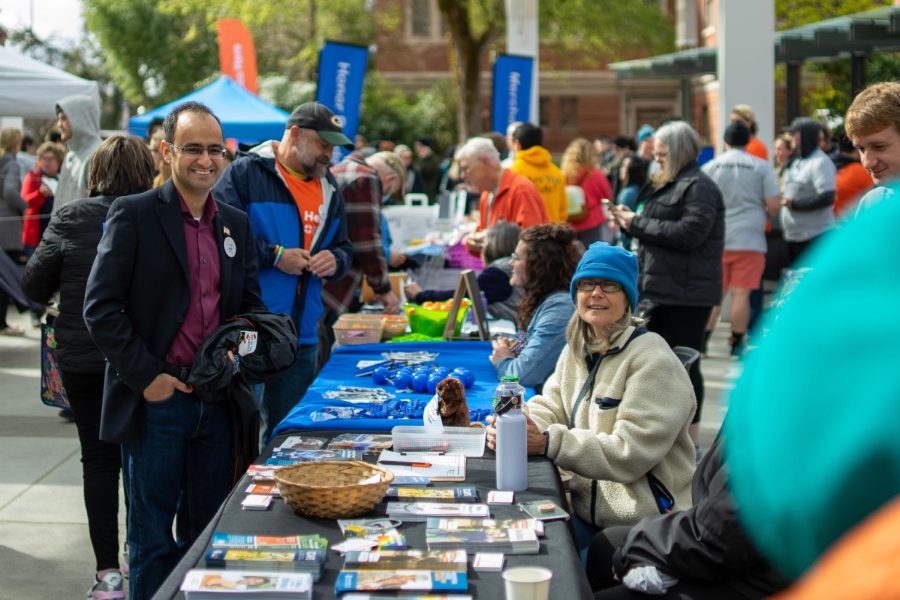NAMI Mid-Valley notes surge in demand for mental health services
Community members gather at the annual Out of the Darkness walk at the Student Experience Center Plaza on the OSU Corvallis, Ore. campus on April 9, 2022.
May 2, 2022
May is Mental Health Awareness Month, and members of the National Alliance on Mental Illness Mid-Valley have observed an increase in community outreach as COVID-19 regulations continue to lift.
NAMI serves as the largest national grass- roots organization for mental health education, awareness and advocacy efforts, led by family members of people diagnosed with mental illness.
Mental health services across Corvallis, Ore. are experiencing high demand, resulting in prolonged wait times for people of all age demographics, according to Marilyn Marker, president of NAMI’s Mid-Valley branch.
The National Institute on Mental Health reports one in five adults experience mental health disorders in a given year, and one in five teenagers aged 13-18 experience a severe mental health condition at some point in their life.
The pandemic has exacerbated some people’s mental health issues, with younger generations being one demographic currently experiencing higher rates of stress than other groups, as reported by the American Psychological Association.
“Statistically, the largest increase in mental health needs are among children and young adults,” said Rob Wilson, a representative on the NAMI Mental Health Citizen Advisory Board.
According to Marker, it can take around six months for an adult on a waiting list to be seen by a mental health provider and up to 18 months for children.
“Because there’s really high turnover for mental health workers, they can’t fill the positions [in Linn andBenton Counties],” Marker said. “Job searches are going unanswered for mental health services.”
Wilson attributes the lack of mental health services available in Corvallis to the earnings made by professional health providers.
“Part of the issue is that it’s very poorly paid,” Wilson said. “To be a mental health professional, you have to have at least a master’s, and you can make more money driving a truck.”
Marker did note that every police officer in Benton County is trained in Crisis Intervention Training, and the responses to their approach to mental health intervention have been quite positive.
“I really feel like it’s made a big difference,” Marker said. “I’ve gotten a couple of phone calls from family members whose loved one has had an experience with the police prior to this training and another one later… [Their response] was like night and day.”
According to Michelle Schatz, a member on the NAMI Education Advisory Committee, many individuals tend to experience adverse mental health conditions during the spring and fall, with the majority of received calls being from parents asking for services on the behalf of younger family members.
Schatz said she expects this is due to the disproportionate stigma younger demographics face when reaching out for professional help, especially regarding anxiety and panic attacks as a result of stressors from media and the news. Schatz also said she hears more from family members asking for services on behalf of young adults.
“There’s this [stigma] that we keep trying to break through—it’s still there, it’s still prevalent, which is why I feel like I hear more from family members trying to help their person than the people themselves,” Schatz said. “I’m hopeful that they’ll be able to reach out for help, whether it’s us or another organization.”
Marker also said mental health awareness should be focused on all the time, not just during the month of May.
“The mental health crisis knows no months,” Marker said.










































































































